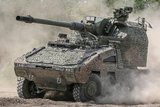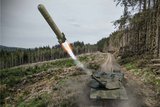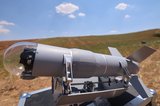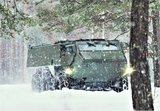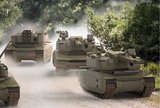Rostec developing correctable artillery projectile
Rostec subsidiary Techmash is developing a new 152mm correctable, high-precision artillery projectile.
The project is currently in the design specification phase. The key feature of the system will be trajectory correction in the final stage of flight, meaning that immediately after firing the ammunition piece will move ballistically like a conventional projectile, but in the vicinity of the target it will use its own control system to correct its trajectory.
Alexander Kochkin, deputy CEO of Techmash, said: ‘It is a new 152mm correctable projectile for artillery of that calibre. It is difficult to build a control system into ammunition of this type due to the high dynamic loads that the projectile undergoes at the moment of firing, while it is spinning within the barrel bore and during the flight.
‘At a spin rate as high as 30,000 revolutions per second, optics do not work — the picture is blurred. We are considering several ways to correct the projectile trajectory in the final stage, including aerodynamic surfaces on the fuse and mini jet engines.’
More from Land Warfare
-
![Dedicated drone munitions could unlock modular mission potential]()
Dedicated drone munitions could unlock modular mission potential
Top attacks have proven effective against heavily armoured vehicles in Ukraine. A new family of uncrewed aerial system-delivered munitions is looking to press that advantage further.
-
![Germany signs multi-billion-dollar deals for 6x6 CAVS and GDELS Eagle vehicles]()
Germany signs multi-billion-dollar deals for 6x6 CAVS and GDELS Eagle vehicles
The order is a further boost for the Common Armoured Vehicles System programme which has notched notable successes in the past 12 months. The first vehicle, made in Finland, will be delivered next year with local production expected to ramp up in 2027.
-
![Rheinmetall and KNDS tank tie-up narrows trans-European options]()
Rheinmetall and KNDS tank tie-up narrows trans-European options
The French and German governments signed an agreement in June 2018 to cooperate on the development of a new main battle tank under the Main Ground Combat System programme but the effort has struggled. This new agreement may damage it further.









